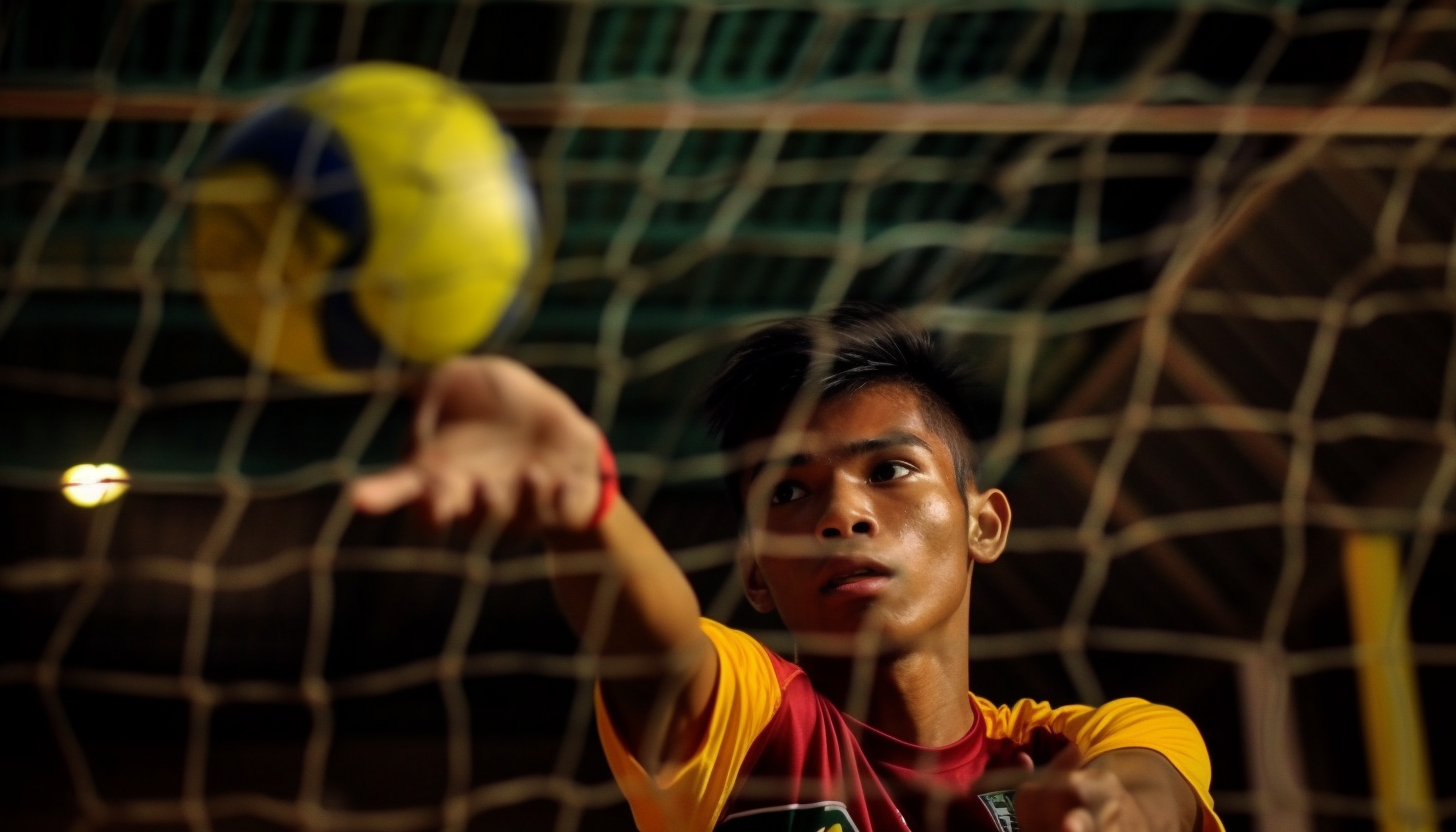P
May 28, 2023
The Evolution of Sepak Takraw: The Traditional Southeast Asian Sport
#Sepak Takraw
#Traditional Sport
#Southeast Asian Culture
#Kick Volleyball
#Traditional Village Games
#Evolution
#Rules
#Equipment
#Techniques
#Jump Serve
#Kick
#Community
#Health and Wellness

sepak-takraw-thumbnail
Origins of Sepak Takraw
Sepak Takraw, or kick volleyball, is a traditional Southeast Asian sport that has seen a rise in popularity in recent years. Originating from the Malay and Filipino cultures, the sport combines elements of volleyball, tennis, and soccer. The word 'Sepak Takraw' is a combination of two Malay words 'sepak' meaning 'kick' and 'takraw' meaning 'bamboo woven ball.' The game is played on a court with a size similar to that of volleyball but with a lower net. Two teams of three players each compete against each other to kick the ball over the net and onto the ground of the opposing team. The team that scores the most points wins the match.
Evolution of Sepak Takraw
The game of Sepak Takraw has evolved significantly over the years. The earliest forms of the sport can be traced back to the 12th century in Southeast Asia. It was originally played with a woven rattan ball and the rules were very similar to volleyball. The game gained popularity in the Malay Archipelago and was played by both the royalty and common folk. The rules and techniques of the game evolved significantly during the colonial era. The British brought in the rules of volleyball and tennis to the game. This led to the transformation of Sepak Takraw from a game played with a woven ball to one played with a bouncy rubber ball.
Traditional Sport, Southeast Asian Culture, and Sepak Takraw
Sepak Takraw is a traditional sport that is deeply rooted in the cultures of Southeast Asia. It is a game that unites people from different backgrounds, encouraging collaboration, competition, and respect. The game is played not only for recreation but also for cultural and community bonding. It is a sport that promotes health and wellness among the people of Southeast Asia. It promotes balance, agility, and coordination. It is a game that is played on the streets and in the courts, bringing communities together. It is a game that is not only enjoyed by the players but also by the spectators who cheer on their teams passionately.
Rules and Equipment
The rules of Sepak Takraw are simple but require skill and agility. The game is played in a court divided into two halves by a net. Each team has three players who take turns in serving, receiving, and kicking the ball. The serve is similar to volleyball, with a jump serve being one of the techniques used. The ball must be kicked before it touches the ground. If the ball is kicked after it touches the ground, it is considered a 'dead ball' and must be served again. The team that scores the most points wins the match. The equipment required for Sepak Takraw is a rubber ball, a net, and court. The court can be any open space but must be marked. The net must be high enough to prevent the ball from touching the ground before being kicked.
Techniques and Jump Serve
The techniques required in Sepak Takraw are similar to those in volleyball and tennis. The jump serve, commonly known as the 'jump serve,' is one of the most distinctive techniques in the sport. It requires players to jump and serve the ball in midair. This technique requires both physical prowess and timing. Another technique commonly used is the 'kick,' where players kick the ball over the net and onto the ground of the opposing team. Other techniques include the 'pass,' where players pass the ball to each other to set up a kick, and the 'dodge,' where players dodge the opponent's kicks to get the ball. The jump serve is a unique technique that sets Sepak Takraw apart from other similar games.
The Community Around Sepak Takraw
The community surrounding Sepak Takraw is one of the most significant aspects of the sport. It is a sport that brings people together from different backgrounds, cultures, and ages. It promotes friendship, collaboration, and respect. It is a game that is played in streets and courts, in homes and schools, and in villages and cities. It is played by people of all ages, from children to adults. It is a game that brings people together, fostering a sense of community. It is a game that promotes health and wellness, physical fitness, and cultural understanding. It is a cultural tradition that continues to evolve and is enjoyed by people around the world.


